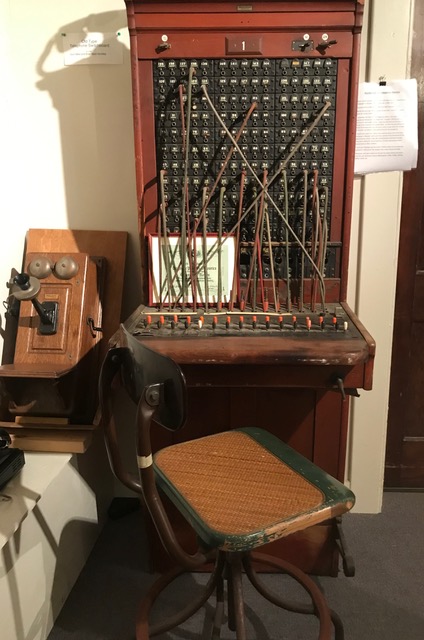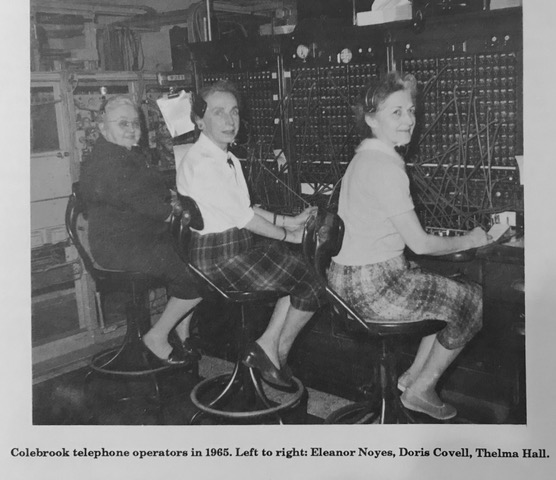
By LUCY WYMAN

Listening to Marvin Gaye’s excellent cover of the fine soul tune I HEARD IT THROUGH THE GRAPEVINE brings to mind the winter of 1981 when I shared a party line with two elderly ladies in New Hampshire’s North Country. They were neighbors who lived across the road from one another, perhaps a thousand feet distance. Ida Gould was 90 and Alice Flanders in her late 80’s and I believe had lived in their respective homes for most, if not all their lives. Yet they spoke daily for hours.
When I moved in a quarter mile down the road and discovered we shared a phone line I thought it was great. In the 50’s my family was also on a party line, although the changing notions about privacy had already insinuated itself into that medium. Twenty years hence, I had two part-time jobs, working for the local Coos County Democrat and gathering milk samples from more than twenty local dairy farms as the “tester” for the Dairy Herd Improvement Association (DHIA). But that’s a story for another day!
My beat was Coos and Essex Counties, up and down the Connecticut River Valley, in itself a lovely drive in the early and late hours of the day: I attended two consecutive milkings in a twelve-hour period which got me out early and home late. While I was not required to inform the farmers of my initial visit, nor did I have a phone the first year, if my car didn’t start, or the weather intervened, as sometimes happened, it was helpful to be able to make calls. Contact with the newspaper office in Lancaster was on occasion desirable as well. Easier said than done, receiving calls was often stymied with the busy line.
Raised in a time when privacy had increasingly become the standard, I was loathe to interrupt their calls and certainly would not consider listening. There came a day, however, when I overcame my reluctance and interrupted their conversation to ask for the use of the line. Their response was immediate and friendly. There was not a shred of indignation or self consciousness. It was clear to me in that moment that this is what I was expected to do. I believed they would’ve felt mortified if they thought for a moment that they were keeping me from using the phone. For them it was the grapevine and a shared resource. All I had to do was ask.
The first telephone exchange was established in Connecticut in the 1880’s but it wasn’t until the early 20th Century it reached northern New Hampshire and Colebrook. In the extremely thorough and interesting company-generated New England Telephone History 1845-1982 it indicates that phone service came to the North Country in 1908. The consolidation of smaller companies throughout the northeast seems to mostly have been by the New England Company. In 1923 it bought out the Plymouth and Compton company serving Colebrook. A year later, this terrific and detailed history reports there were 26 subscribers with magneto phones in Colebrook. These phones were mounted on the wall and, as explained in Wikipedia, operated with “ … a hand-cranked electrical generator that uses permanent magnets to produce alternating current from a rotating armature.
The telephone co-op would publish a directory, perhaps not even in alphabetical order. Each family would be assigned a certain number of rings for their phone. If the phone rang two times and two rings was your signal, you would pick up the phone and talk to the people at the same time, so anyone could pick up their telephone set and listen to your conversation.”
Hence, everyone would have also have to get off the line before a call could be made. This often meant the operator would have to ask everyone on the line to hang up so the connection could go through. Once the connection was made and the phone rang throughout the community everyone picked up to listen, whether it was intended for them or not. The technology still offered challenges, however, and if there were too many people listening the signal could degrade and “…you’d have to shout at everyone to get them to hang up.”
Through this means people stayed connected, across the rural landscape and generations. In the early years of my neighbor’s long lives the telephone was their community news-line and there was little, if any, privacy.
The switchboard itself was a visual metaphor for these personal links with lines snaking back and forth, under and around one another representing the invisible human connections that increasingly connected small towns and communities throughout the twentieth century. I have been told that the switchboards were retired up north in the late 60’s or early 70’s. I have not been able to establish when party lines were no longer in use, but I know from experience it had to be after the mid-80’s.
The switchboard pictured here was given to the Colebrook Historical Society years ago by Mike and Brad Bean whose mother Elsa was an operator. It was kept in the family until the brothers decided to pass it to their neighbor Arnold Goodrum who is the heart and soul of that effort.
A larger board to accommodate the increasing numbers of telephones is shown as well with three local women at work. That was likely taken out of use in the late 60’s or early 70’s as automated systems came into use.
When I moved north to cover the area for the paper and the DHIA, American Telephone and Telegraph (AT&T) served northern Coos County. While the switchboard was no longer in use, the phone lines had not yet been updated to accommodate private lines. For my elderly neighbors who perhaps no longer, or ever drove, it was not only a lifetime habit but continued to give them access to local news and changing culture through other means.
While I would have tea with the ladies from time to time, the 60 years between us had clearly altered our respective views on many issues. That said, I think we agreed on many as well. But for me, I ultimately understood that when these ladies listened to my phone conversations—which I never doubted—they understood that the young woman down the road, with whom they had tea, who might talk of once-scandalous practices on the phone to her peers, was the harbinger of changing times. I was an informant for them and in this graceful, unobtrusive way, they learned about the changes around them. This was another tool, along with the TV, magazines and newspaper that helped them adapt to the times. Through the “grapevine” they stayed in touch with one another, their community, and world.
Note:
The NEC report cited above includes an interesting and unrelated footnote from February of 1980. It states the company installed…”forty microwaves systems, 1250 telephone lines 2500 service orders and 25 tone of equipment help bring election coverage…” to the First In the Nation Primary, presumably in Dixville.





